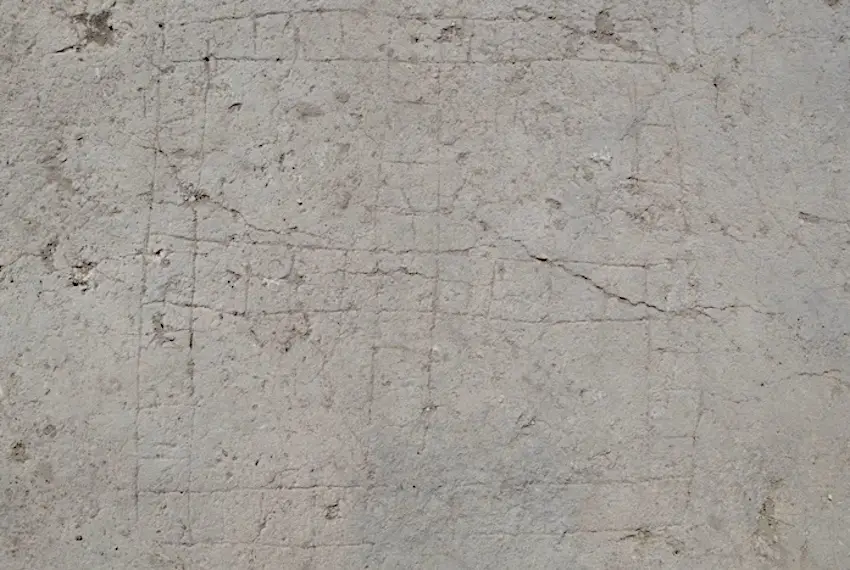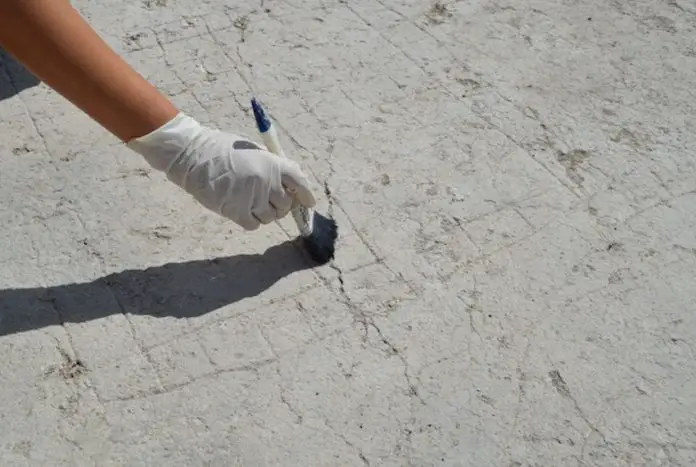Archaeologists following the tracks of the Maya Train continue to discover pre-Columbian artifacts along the 1,554-kilometer route.
The latest success story shared by the National Institute of Archaeology and History (INAH) is the ongoing restoration of nine patollis, pre-Columbian board games, scratched into a rock surface near the village of Xpujil, Campeche.

Félix Camacho Zamora, the archaeologist in charge of INAH’s local rescue and conservation project, said the patollis, estimated to be about 1,000 years old, are carved into an 11.3-meter-long by 2.8-meter-wide surface of stucco.
Patolli — a game of strategy and luck played by commoners and nobles alike — is one of the oldest known games in the Americas. It was played by a wide range of pre-Columbian Mesoamerican cultures. Spanish conquistadors noted that Moctezuma II, the ruler of the Aztec Empire, enjoyed watching his nobles play patolli.
The game, which uses black beans with a hole drilled in one side as dice, was not simply seen as entertainment, according to the news site Infobae. Patolli was played as a social and ceremonial activity charged with sacred symbolism.
Camacho’s team has been working since Aug. 23 to preserve the petroglyphs, first addressing issues such as weathering, fractures and cracks, disintegration, detached pieces of stucco and abrasions.
El INAH conserva nueve patollis, juegos mesoamericanos descubiertos en obras del @TrenMayaMX
🔹Los grafitis presentaban deterioros, como grietas, fracturas y pérdida de capas.
La información en: https://t.co/lyiylUe51R
📸Felix Camacho Zamora. pic.twitter.com/aaZjgOKqPm
— INAH (@INAHmx) September 4, 2024
The team applied emergency measures to preserve the rock structure upon which the patollis were found, Camacho said, before restoring the stucco. The emergency measures included injections of lime water to bind the stucco, as well as stitching and edging the remains of the mortar-like material.
Before each patolli was sectioned and lifted off the surface of the rock, the preservation team sketched and photographed the entire area, carefully applying photogrammetric techniques.
Once these safeguards were completed, the patolli sections were transported to INAH’s Restoration Laboratory in Chetumal, Quintana Roo.
The patollis were found alongside the Campeche-Chetumal highway which parallels Section 7 of the Maya Train tracks.
In addition to the ancient board games, archaeologists found two Late Classic (600-900 A.D.) ceremonial centers nearby, suggesting these patollis were used by high-ranking Maya officials, Infobae reported. Investigators are working to confirm the time periods by dating ceramic artifacts uncovered in the area.
In May, INAH reported the discovery of ancient Maya beekeeping tools farther east in the adjacent state of Quintana Roo.
President Andrés Manuel López Obrador will be in Quintana Roo this weekend, but will return on Sept. 15 to ride the Maya Train on Section 7 from Calakmul, Campeche, to Chetumal.
With reports from Infobae and La Jornada
